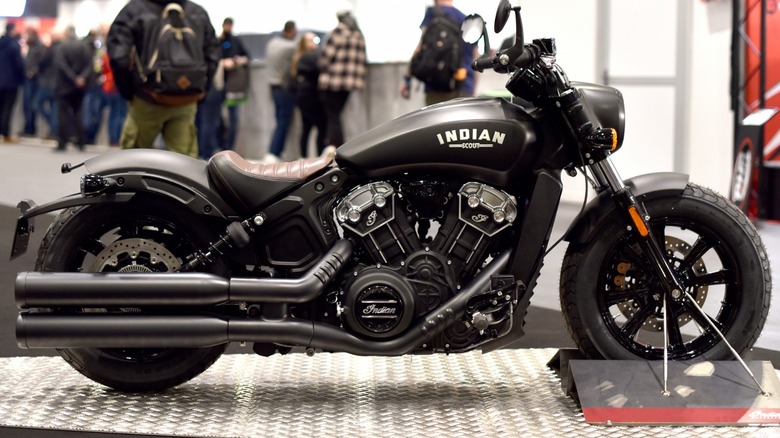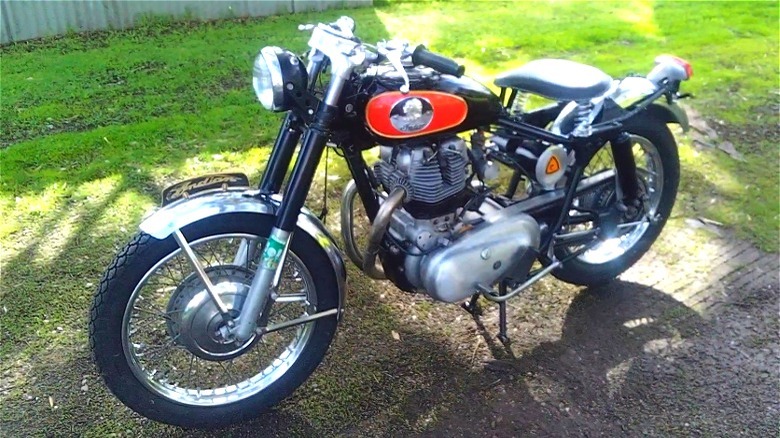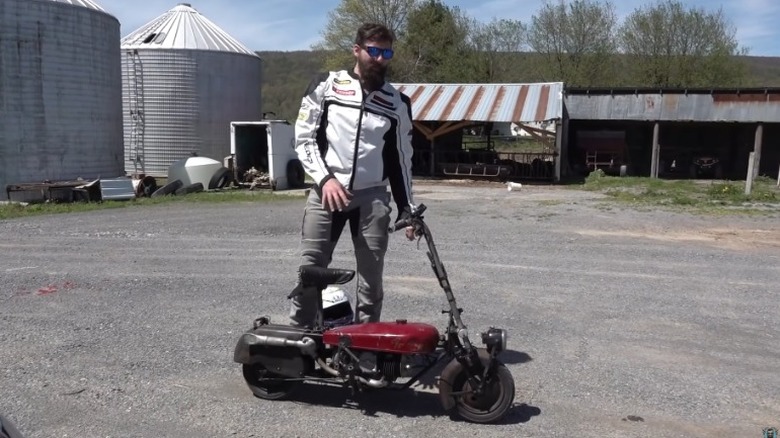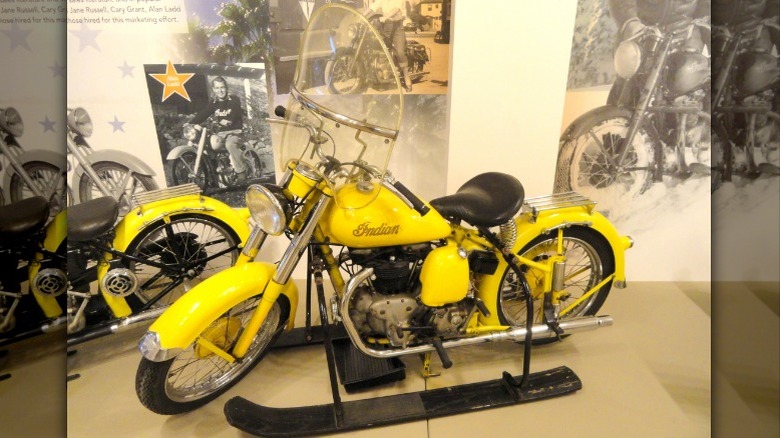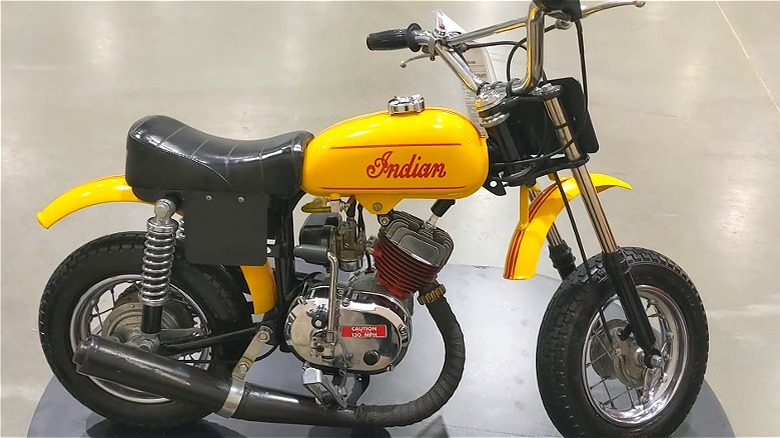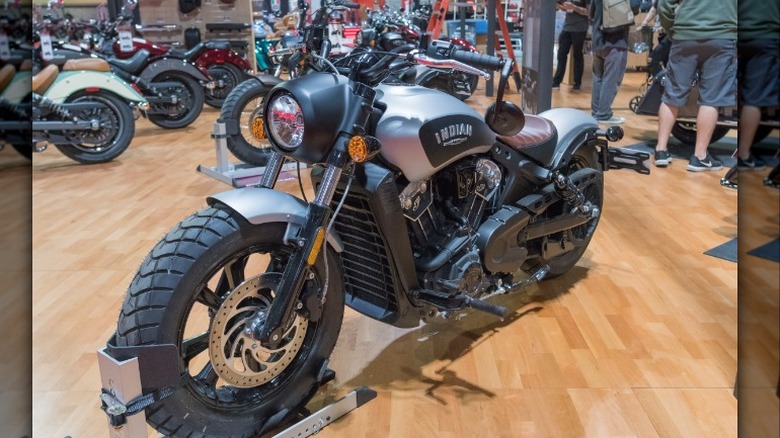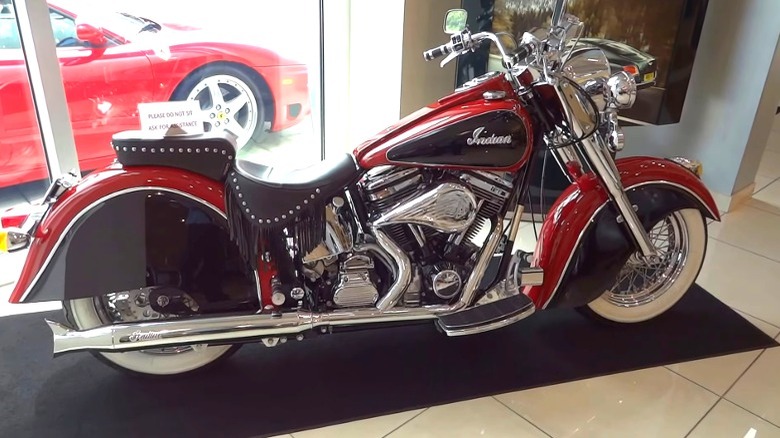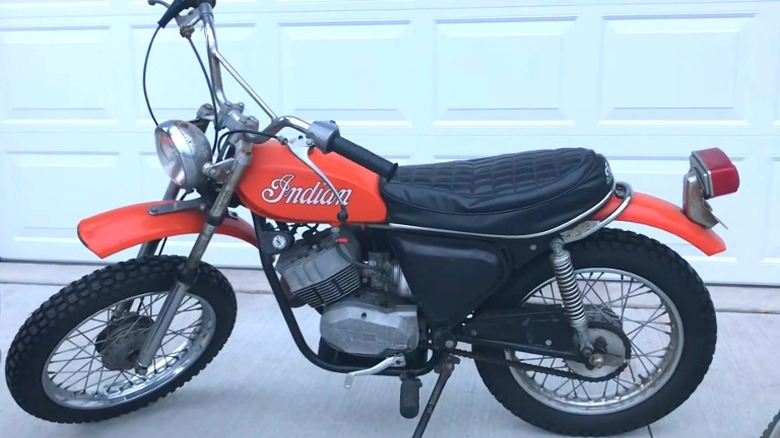Classic Indian Motorcycles That Are Surprisingly Cheap
At the end of the nineteenth century, Hendee Manufacturing Company was established for the production of bicycles, entering what was a growing and lucrative industry at the time. While the company found success selling its Indian model bicycles, the winds were shifting and a nascent motorcycle industry had blossomed with the spread of internal combustion engine technology. Hendee soon switched to motorcycle production, later changing the company's name to Indian after its bicycles.
During the first half of the 20th century, the name Indian was synonymous with American motorcycles and eventually became closely tied with the image of a large V-twin motorcycle in particular. Indians ferried soldiers on the battlefields of World War I and World War II and also became popular patrol vehicles for police. In the post-war period, Indian found itself on shaky ground and struggled to remain profitable. Several attempts were made to revive the brand, often using foreign-built bikes with Indian branding, but these efforts never lead the company to enduring prosperity. The late '90s saw another promising attempt fail, and it was not until Polaris acquired the brand in 2011 that Indian's fortunes would finally be turned around.
Now on solid ground, Indian Motorcycle is thriving with several premium models on offer today. Premium is a key descriptor as Indian motorcycles tend toward the high end of the pricing spectrum. However, looking over its past catalog, here are nine examples of models that are -– relatively speaking –- surprisingly cheap.
Indian Apache - 1950s
After World War I, Brockhouse Engineering was a major Indian supplier and owned a financial stake in the company. By 1955, it had acquired the company outright. This came about at least partially due to fluctuations in exchange rates that caused British bikes to be far cheaper than American-built models, leaving Indian unable to compete. With the Brockhouse ownership, Indian models became fully British motorcycles brandishing an American identity only.
In this period, the Apache was released featuring a 700cc parallel-twin. This style of motorcycle was very popular at the time and the design would be seen in several Triumph, BSA, and Norton models of the time. The similarity should not be surprising as Indian motorcycles during this time were simply rebadged Royal Enfields with a few changes. Indian sold several models of Enfield at this time, and had some alterations including American-style cruiser handlebars, added fender flares, and Indian head adornments on the front fenders. Otherwise, they are all Royal Enfield.
Most Indian collectors either want the big V-twin editions or the early more bicycle-like models. These late '50s Indians are hard to find in any year. Some of them can be quite expensive, particularly the Chief and Trailblazer. However, an Apache, Woodsman, or Westerner can be had for a few thousand dollars if you are watching the market closely.
Indian Papoose - 1950s
During World War II, motorcycle companies in the U.S. and U.K. contributed to the war effort, and motorcycles often served as ideal vehicles for couriers. Harley-Davidson and Indian contributed models that served ground forces, while other companies produced two-wheelers for airborne troops. One example was Excelsior's Welbike, a small, foldable motorcycle with a 98cc two-stroke engine that was small enough to be packed in a crate and dropped out of planes with a parachute. Once men and machines hit the ground, select soldiers could unpack the little bikes and execute their missions.
Once the war ended, production of this little bike continued. Brockhouse Engineering had been manufacturing it when the company obtained a stake in Indian Motorcycles, leading to many of its products being exported and branded as Indians for sale in the U.S. The little Welbike became the Indian Papoose and was offered for sale from 1948 through 1954.
About 27,000 were made and their simple construction and origin as a military product meant they are robust, easy to work on, and relatively reliable. While not exactly commonplace, many still exist. When they do come up for sale, relatively good condition examples can be found for around $2,000, although mint condition bikes can easily exceed $5,000.
Indian Scout - 1940s
The smaller Scout was introduced after the war as a new model meant to counter the competition from incoming British bikes of similar design. Aside from a couple of 4-cylinder models produced by Indian, these were the only motorcycles built by the company without V-twin engines in decades.
In 1949, the Scout was still an all-American machine. While Brockhouse was now a substantial part of the company, manufacturing continued in Springfield until 1953. It did feature a parallel-twin engine like the British bikes but still employed the same innovative rear suspension seen in pre-war Indians.
Recent listings for these are difficult to find. Furthermore, Scouts are not necessarily cheap in any respect, but, compared to the $40,000 that many vintage Indians can sell for, they are at least attainable. Over the last five years, many scouts have sold for well under $10,000, with very nice examples going for just above $15,000. It should be noted that some particular models can sell for well over this amount. However, as is the nature of the vintage and antique motorcycle market, prices are always hard to pin down.
Indian MM-5A - 1960s
From 1963 until his death in 1970, the Indian brand was owned by Floyd Clymer. As a motorcycle racer, dealer, and distributor, Clymer was ideally suited for the position, especially as he also held a position as a magazine publisher and could offer additional promotion through print media at the time. While he was not able to restart production of the motorcycles, he did import several Italian models branded and sold as Indians, including the little MM-5A.
Mini-bikes were popular in the '60s, and that made marketing fun little dirt bikes rather easy. To get a model in the showrooms, Clymer contracted with Italjet to bring over its Mini Mini Bambino as an Indian. This tiny bike is a 50cc two-stroke with a top speed of about 12 mph that serves as the perfect entry point into the world of cycling for children. When purchased new, the air intake was restricted to keep the speeds low for safety concerns, but parents with mechanical aptitude learned to derestrict the bikes and open them up as kids grew into them.
Today, a MM-5As can be picked up for around $2,000. Exceptionally well-kept examples and those with a full restoration may exceed $4,000. These are clearly not meant for adults, but they are a great addition to any Indian collection.
Indian Scout Bobber - 2020s
Today, Indian Motorcycle's lineup includes a range of excellent bikes, but many command top-tier prices. However, the affordable Scout Bobber is an excellent choice at an exceptional value.
This current Scout offers a 1,133cc V-twin engine fed by a fuel-injection unit and cooled by water. Its power rating is excellent at 100 horsepower, and with a curb weight of 554 pounds, its acceleration is brisk. However, as a V-twin cruiser, acceleration is not the focus, but low-end torque for pulling away from a stop is where these engines shine. The Bobber is styled with a classic stripped-down look and foregoes all the superfluous embellishments seen on the big baggers, resulting in a compact and sporty bike. As a modern motorcycle, it offers electronic engine management and the build quality translates to something that is reliable and robust. However, it retains a traditional analog speedometer and is devoid of flashy screens or digital graphics.
Best of all, this modern yet classically styled motorcycle can be had for $11,500. For what some perceive as a premium product, it is a good value and is priced several thousand dollars less than the $15,000 Harley-Davidson Sportster. It might not exactly be cheap, but a $4,000 price difference certainly pushes it in that direction.
Indian Chief - 1990s
After being dormant since 1977, someone acquired Indian Motorcycles and attempted a proper resurrection. Rather than repeating the sins of the past by importing cheap Chinese bikes and plastering headdress logos all over them, these new Indians would be properly built from the ground up — and the finished products seemed worthy of the heritage.
The new bikes debuted in 1999, bringing back the Chief model along with deeply skirted fenders, a big V-twin engine, and an ample display of chrome. The Indians from this time are often called the Gilroy Indians after the California town in which they were built. They were big on style and powered by S&S V-twin engines cloned from earlier Harley-Davidson blocks. The air-cooled 88 cubic inch engines are classic American cruiser units, and the 75 horsepower offered is decent, although the 650-pound bikes need every bit of it. These bikes looked the part and integrated the Indian legacy into them in every way possible.
However, quality appeared to have been left out of the picture. Motorcyclist wrote about them in 2010, lamenting the poor handling, uncomfortable seating, and generally abysmal construction that leads to inevitable repairs. Today, the Gilroy Chiefs are rare, especially since they barely produced more than 1,000 copies in 1999 and sold them for over $20,000. Despite the fact that many of these Gilroy bikes continue to sell for more than the original retail price, they can be found for as little as $6,000 — which is not too bad for a piece of American steel.
Indian SE-74 Super Enduro - 1970s
When owner Floyd Clymer passed, the Indian company went to his attorney, Alan Newman. The new leader of the company wanted to expand, but rather than continuing to import foreign cycles and affix Indian logos to them, he wanted to build his own. He would accomplish this, but they were still foreign built.
Newman set up a new factory in Kaohsiung, Taiwan to produce original designs using lower-cost Taiwanese labor. This led to a range of smaller motorcycles, mostly for off-road, built with generally good quality. Among them was the SE-74 Super Enduro. This dual-purpose bike is powered by a 70cc two-stroke engine, most likely made by Minarelli, although some bikes from this period have Japanese engines and others were made in the Taiwan factory itself. Information from this period is sparse, and the dearth of available bikes for sale on the used market is probably a result of overall poor sales. The Newman venture would eventually go bankrupt in 1977, sending the Indian name dormant until 1999.
While these are not the big V-twin cruisers typically associated with the brand, they can still be considered true Indians. Regardless, prices are not the same as the iconic cruisers and can be picked up for around $3,000 when they are available at all.
